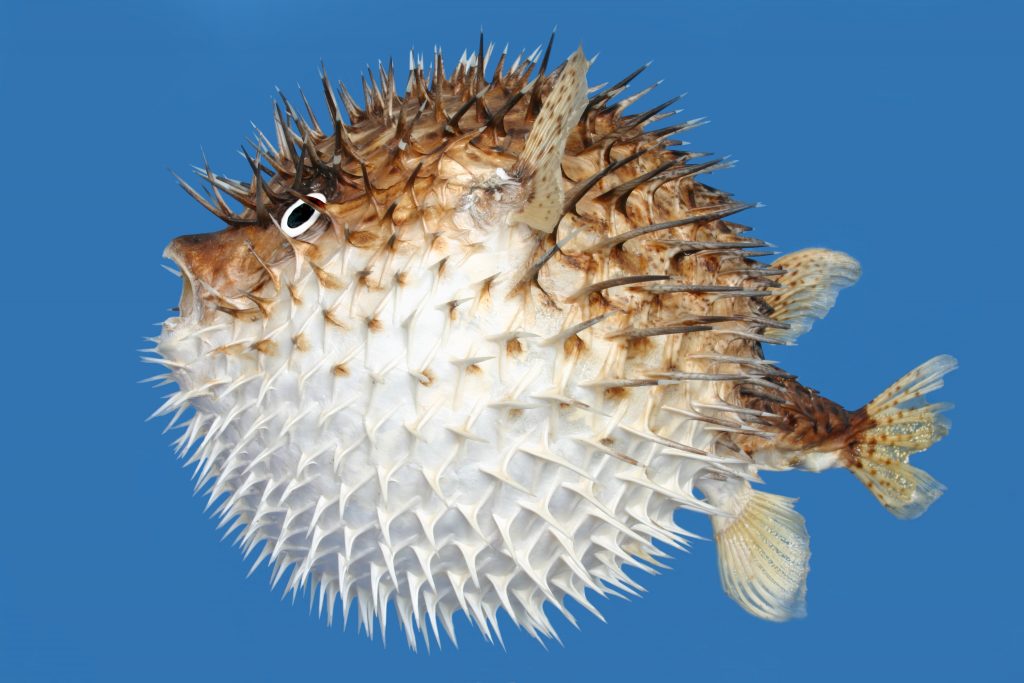
We are told that “A single set of genes drives the development of pufferfish spines, zebrafish scales, mouse hair,and chicken feathers. The pufferfish studied in the open-access paper is the odd one out, described in the article as an “obscure species”:
The new study, conducted in the Japanese grass pufferfish (Takifugu niphobles), confirms recent findings that the same signaling pathways shape all vertebrate skin appendages but represents the first attempt to demonstrate this in such an obscure species.
“The building blocks of these structures are pretty much conserved across vertebrates,” says coauthor Gareth Fraser, an evolutionary developmental biologist at the University of Florida in Gainesville. “Even these spines from this really odd, derived group of fishes, the pufferfish, still use the same set of genes that makes hair, feathers, fish scales, and shark dermal denticles.” … The pufferfish study confirms, “in a way, unsurprisingly,” that skin appendages are governed by the same molecules in all animals, he says. The next step will be to learn how the conserved network has been tweaked to produce pufferfish spines of varying size and skin coverage. Having now successfully bred pufferfish at the University of Florida, Fraser plans to pursue the research in the coming year. Nicoletta Lanese, “Pufferfish Spines Shaped by Same Genes as Feathers and Fish Scales” at The Scientist
If so, this set of genes got started a very long time ago and shows an admirable ability to switch from producing, say, lawnmowers to cars to cell phones. Yet it got started back when life was supposed to be simple and primitive, remember? It would seem that something back then was not simple and primitive. Watch the file.
See also: Direct Experimental Falsification Of Darwinism?
and
Researchers: Body Plan Evolution Not So Simple As Once Thought The Hox genes are not the big answer many thought